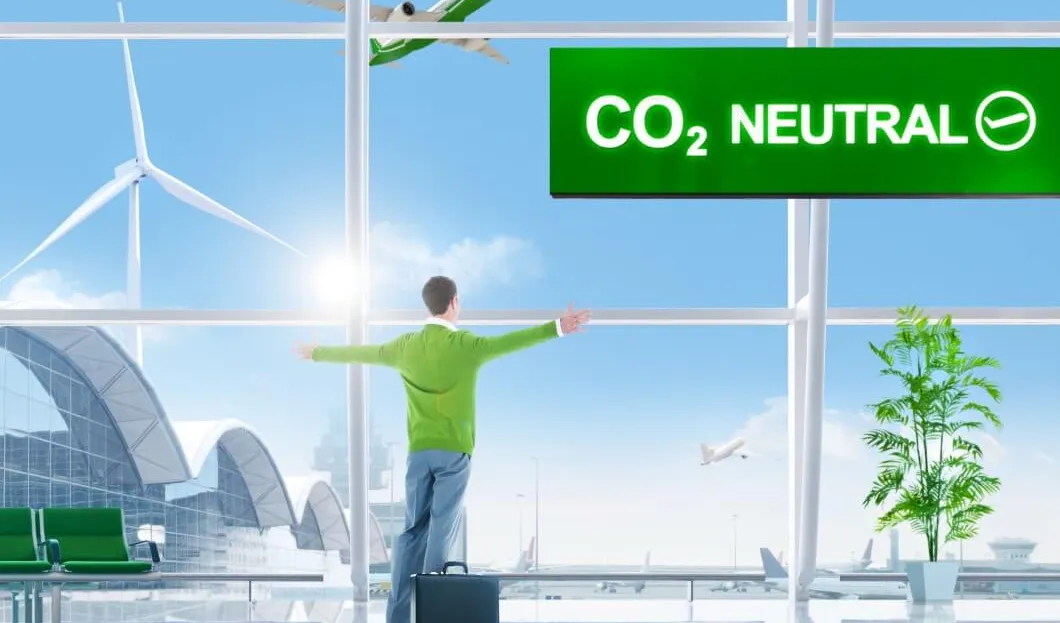
According to a report by the Office for Technology Assessment at the German Bundestag (TAB), no single technology can achieve more climate-friendly aviation. The report analyzed innovative approaches for more environmentally friendly air transport. It found that there needs to be more than an existing strategy to meet the emissions targets.
Instead, a combination of different technologies is required to achieve the goal. These technologies include electric drives, sustainable fuels derived from waste or biomass, green hydrogen (H2), fuel optimization, more sustainable aircraft design, and increased efficiency to reduce emissions.
Climate-neutral Aviation is unattainable by 2050
Stefan Gössling from Linnaeus University in Kalmar, Sweden, critiques the report for its lack of clear conclusions. He asserts that achieving even remotely climate-neutral aviation by 2050 is a lofty goal that can only be reached through drastic measures such as taxation or feed-in quotas. He emphasizes that research and development funding alone cannot solve the problems, and countries must play a significant role in finding a solution. The aviation industry, too, must acknowledge and address its environmental impact.
According to the TAB, quick solutions for new drives or fuels cannot be expected. The aviation sector has long development and approval periods for new technologies. It is estimated that developing and approving new aircraft designs or engines could take up to 15 years, with market penetration taking up to 30 years.
Criticism of Less Ambitious Climate Goals
Despite the ongoing climate crisis, the number of air travelers is increasing globally, which has severe consequences. By 2050, there could be 60% more CO2 emissions than in 2019, as stated in the TAB report. However, Professor Gössling sees a weakness in the report's starting point, which aims to make aviation more environmentally friendly by 2050. He criticizes the report, stating that it is unclear why aviation should achieve less ambitious climate targets than other sectors, especially since it is a rapidly growing sector. He also points out that Germans contribute significantly to high travel emissions caused by only about a third of the population and frequent flyers. The industry as a whole faces a significant challenge in becoming more climate friendly. According to the TAB, the number of passengers transported in Germany increased from around 136 million in 2004 to 227 million in 2019.

Important Approach: Reducing the Demand for Flights
Gössling criticizes the report on climate-neutral aviation for not emphasizing the most important approach to reducing emissions: reducing flights. This measure can be achieved by imposing taxes on long-haul flights, which cause the largest emissions. According to the report, 25% of the longest-distance flights contribute to 70% of emissions. By highlighting the power of individual choices in reducing air travel, the audience can feel empowered to make a difference.
The report states that air traffic contributes 3.5% to 5% to artificial warming, whereas Europe accounts for around 4% of total annual greenhouse gas emissions.
Besides CO2 emissions, air traffic also has other adverse effects, such as soot particles, water vapor, sulfur, and nitrogen oxides resulting from kerosene combustion. These lead to the formation of contrails and cirrus clouds and have a much more significant impact on the climate, which is not yet fully understood scientifically. The climate impact also varies depending on travel distances, cruising altitudes, and the aircraft used.
Alternative Fuels Only Promise Success in the Long Term
The Office of Technology Assessment highlights the ongoing research into more sustainable aviation fuels (SAF) that are not derived from petroleum. Two types of SAF are under study: biofuels and electric fuels (e-fuels). E-fuels, similar in composition to fossil fuels like kerosene, are created through power-to-liquid (PtL). This process involves the electrolysis of water into hydrogen and the subsequent conversion of that hydrogen with CO2 into synthetic fuels. However, the assessment cautions that a significant expansion of renewable energies is necessary to meet the electricity requirements of e-fuels.
One issue with using hydrogen as a direct fuel is that it must be stored in large, insulated tanks within the aircraft at a temperature of minus 253 degrees Celsius. Due to the technical complexity of this process, practical applications are not expected to be available until 2035.
A Global Uniform Solution for Climate-neutral Aviation Needed
Two main issues related to air travel are the need for a consistent energy supply at all airports and the high cost of implementing parallel infrastructure. These points were addressed in a report by TAB, and it was concluded that switching to a different energy supply system will likely take time. However, this report was criticized by Gössling for being too optimistic, as there are no working pilot plants for e-fuels at present. The technology is challenging to scale up and will require significant electricity that could be used elsewhere. Moreover, e-fuels are expected to be so expensive that airlines are unlikely to use them voluntarily.
The TAB report suggests several ways to optimize flight operations and reduce emissions. These include aerodynamic improvements such as smooth surfaces and curved wing tips, efficient flight procedures like slower descents, climate-oriented optimization of speed and flight profiles, and increased aircraft utilization. Flight planning at the airline and air traffic management level also has the potential to reduce emissions, for example, by avoiding detours and managing airspace more effectively. Targeted taxation is another measure that can accelerate the development of these initiatives.
Focus on Private Aircraft and Frequent Flyers
The Office for Technology Assessment suggests that private aircraft, especially those used for short flights, require special attention as they contribute significantly to climate-damaging emissions. According to their share of emissions, the number of flights carried out by private aircraft in Germany has increased disproportionately.
Furthermore, Professor Gössling emphasizes the need to focus on individuals who cause the most emissions per capita, such as frequent flyers who take more than ten flights annually, particularly in premium classes. Such flights cause three to five times higher emissions than economy class flights. Professor Gössling is convinced that limiting this group's air travel or compelling them to opt for economy-class flights can significantly reduce emissions. Additionally, banning frequent flyer bonus programs that encourage more trips and upgrades can prove helpful.









